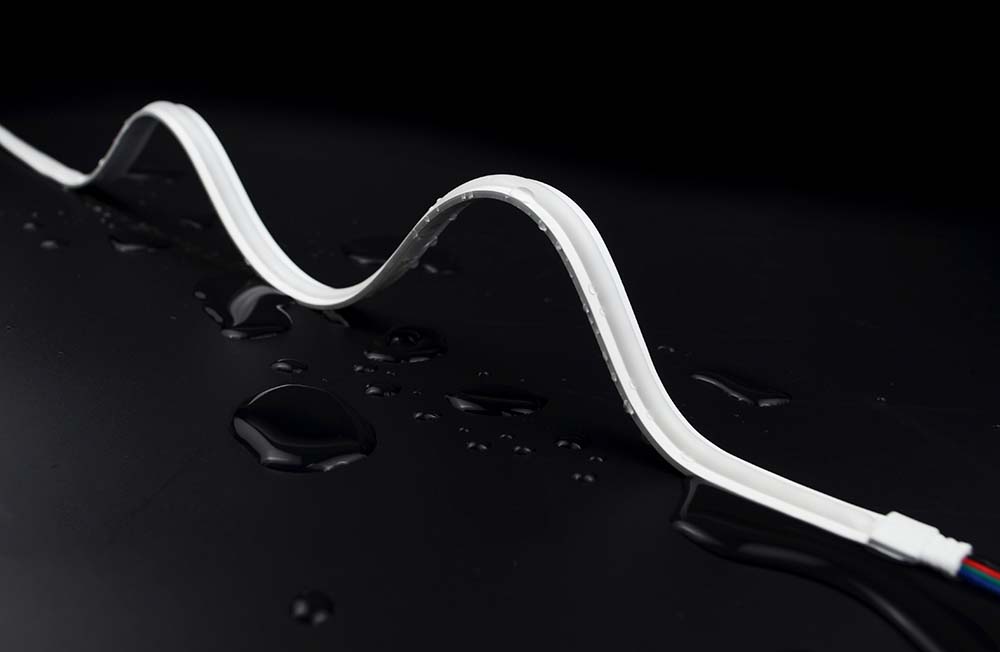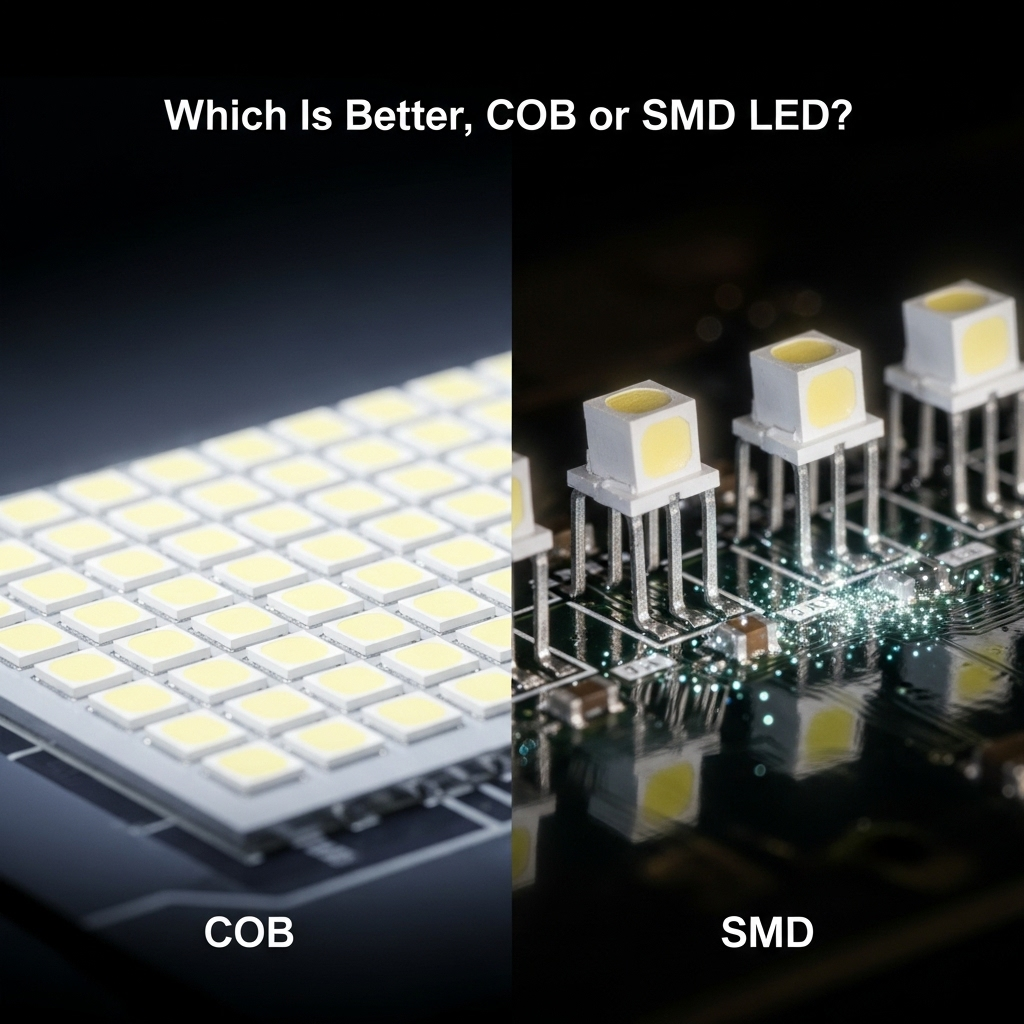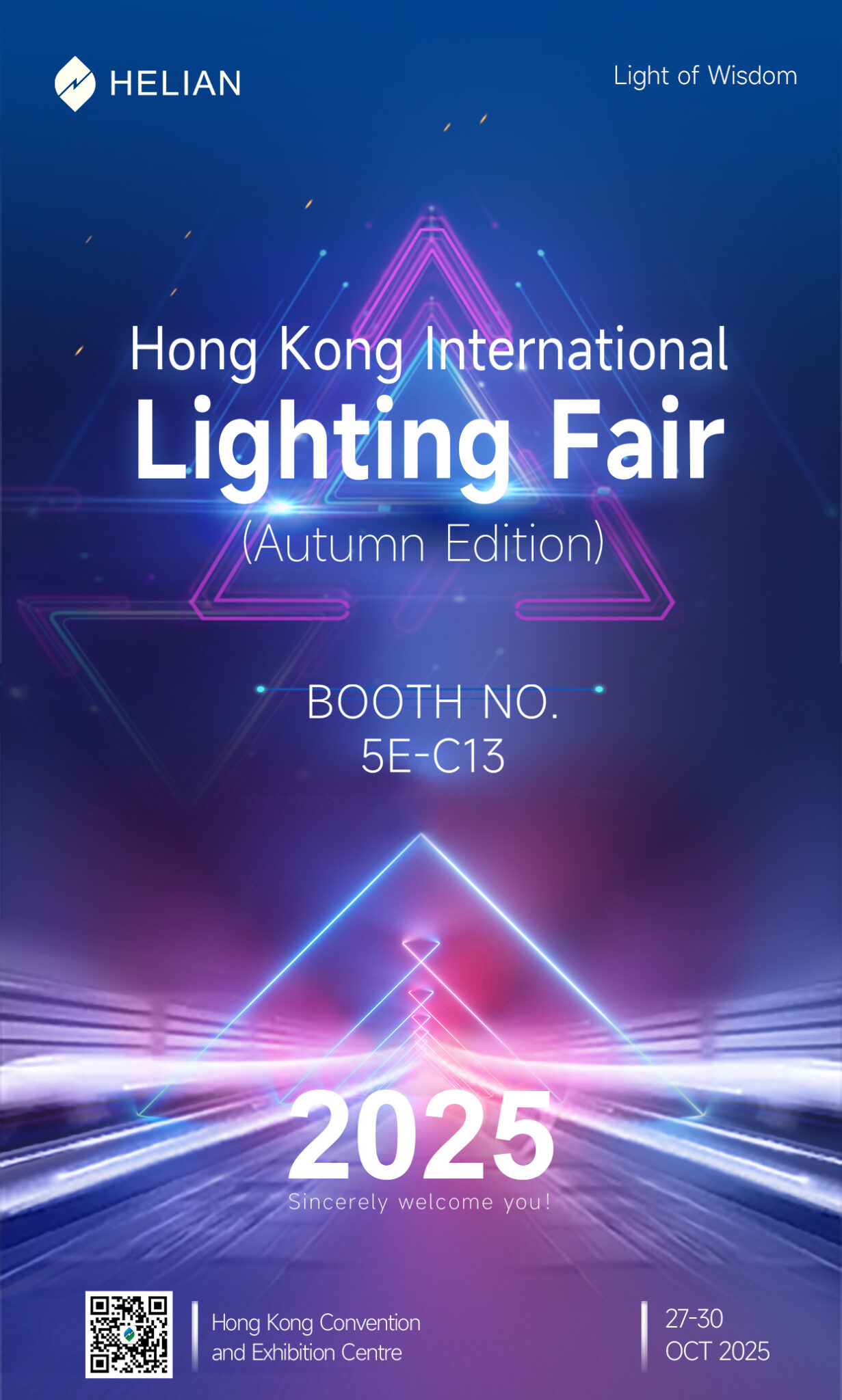
Light-emitting diodes (LEDs) have changed the way we light our homes because they are energy-efficient, long-lasting, and flexible. But it can be hard to know what sorts of LEDs there are, what their specs are, and how to utilize them best. We answer the most common questions about LEDs below with clear, authoritative answers based on industry standards (such IESNA) and real-world data.
What Are the Main Types of LED Lights?
“Types of LED lights” might mean several things, including packaging, usage, or beam pattern. But the most common way to group them is by structural packing technology, which is a big role in performance, cost, and use cases. There are three main types:
LEDs using COB (Chip-on-Board) technology
COBs put many LED chips directly onto a single substrate, such a ceramic or metal-core PCB, so there is no need for separate cases. COBs are allowed by industry standards to do the following:
- High lumen density (great for purposes that demand a lot of light).
- Even light dispersion with few hotspots (very important for commercial lighting).
- Better heat dissipation (shown by thermal testing), which makes them good for stadium lights, streetlights, and floodlights.
LEDs for surface-mounted devices (SMDs)
SMDs are single chips that are glued onto PCBs without leads. This is the most popular variety for everyday use. According to IESNA rules, their strengths include their small size (2835, 3528, and 5050 are common sizes) and their ability to be designed in many ways (for example, curved LED strips).
- Cost-effectiveness (made in large quantities for home bulbs, car lights, and displays).
- Moderate efficiency (finds a good mix between brightness and cost for residential and business use).
LEDs in Dual In-line Package (DIP)
DIPs are the earliest form of packaging. They have a plastic/epoxy case with two leads that stick out. They are nevertheless useful for niche applications, such vehicle dashboards and appliance indications, even if they are less prevalent for primary illumination.
- Strong (can handle vibration and work with older systems).
Which Is Better, COB or SMD LED?

There is no one solution that works for everyone; your option will depend on how you want to use it, how much money you have, and how well it needs to work. Based on testing in the field and in the real world, here is an authoritative comparison:
| Comparison Dimension | Core Application Scenarios | Eficiência energética | Light Output Quality | Heat Dissipation & Lifespan | Initial Cost | Design Flexibility | Maintenance Difficulty & Cost | Lumen Density (Brightness Potential) | Potential Limitations | Final Recommendation |
| COB LED (Chip-on-Board) | 1. Commercial high-brightness scenarios (e.g., stadiums, outdoor floodlights, main lighting in large shopping malls)2. Scenarios sensitive to light uniformity (art galleries, jewelry/clothing retail display cabinets) | 24% more efficient than standard SMD LEDs in scenarios with 90+ Color Rendering Index (CRI) (data from LED industry laboratories) | No hotspots, uniform light distribution (deviation ≤ 5%), suitable for scenarios requiring high color reproduction (e.g., artwork lighting) | Excellent heat dissipation with ceramic/metal substrates, reducing lumen depreciation; lifespan is 10-15% longer than low-grade SMD LEDs (average 50,000-60,000 hours) | 30-50% higher initial purchase cost than SMD LEDs at the same brightness (due to multi-chip integration technology) | Integrated design with large volume; not suitable for curved/narrow fixtures (e.g., curved light strips, micro-devices) | High chip integration; overall replacement required for partial failures, leading to high maintenance costs | High (200-250 lumens/W); high power per single lamp bead (10-50W) can be achieved without splicing multiple lamp beads | 1. Low design flexibility; incompatible with micro/special-shaped fixtures2. High initial investment; low cost-effectiveness for small-area lighting | Priority choice for commercial/professional scenarios requiring high brightness, uniform light effect, and long lifespan (e.g., stadiums, art exhibitions) |
| SMD LED (Surface-Mounted Device) | 1. Residential lighting (household bulbs, ceiling lights, downlights)2. Low-cost decorative scenarios (flexible LED strips, holiday lights)3. Backlighting for small devices (automotive dashboards, electronic displays) | Meets efficiency standards in regular scenarios (120-150 lumens/W); efficiency is slightly lower than COB in 90+ CRI scenarios | Light uniformity depends on chip spacing; hotspots may occur if spacing is uneven (deviation may exceed 10%), but it can meet the needs of regular lighting scenarios | Average heat dissipation with plastic substrates; lifespan of low-grade products is about 40,000-50,000 hours; SMD LEDs with ceramic substrates (e.g., Model 3535) have heat dissipation close to that of COB | Significant cost advantage; bulk purchase price is 30-50% lower than COB, suitable for budget-sensitive scenarios | Ultra-thin (0.8-1.2mm thickness) and miniaturized, supporting flexible PCBs (e.g., curved light strips) for fixtures with complex shapes | Individual chips can be detached and replaced independently (tool: heat gun), resulting in low maintenance costs (only faulty chips need replacement) | Medium (120-180 lumens/W); low power per single lamp bead (0.2-1W); splicing of multiple lamp bead arrays is required for high-brightness scenarios | 1. Splicing of multiple lamp beads required for high-brightness scenarios, which may increase fixture volume2. Uneven quality of chips in low-end products, prone to uneven lumen depreciation | Priority choice for residential lighting, low-cost decoration, and scenarios with flexible design needs (e.g., household light strips, small electronic devices) |
The Final Decision: If you need something for business or high brightness, choose COB. If you need something for home, on a budget, or that can be changed, choose SMD.
What Is Type 3 LED?
The Illuminating Engineering Society of North America (IESNA), the main group that sets lighting design standards, defines “Type 3 LED” as a beam distribution type, not a type of packaging.
Important Information About Type 3 LEDs:
- Pattern of the Beam: It is oval-shaped and has a 40° lateral spread, which means it is smaller than Type IV and wider than Type II.
- Light Projection: Sends 60–70% of light forward and very little light back (reduces glare).
- Best Uses:
Roads with 4 to 6 lanes of traffic.
Walkways and parking lots.
Fixtures for the outside of buildings that go on the wall.
IESNA also specifies Type I (narrow, for sidewalks), Type IV (broad, for big parking lots), and Type V (circular, for open spaces like parks).
Which Type of LED Lights Are Better?
“Better” depends on what you need; no one kind is better than all the others in every situation. Here is a decision-making paradigm based on basic needs:
| Core Need | Recommended LED Type | Rationale |
| Alto brilho | COB LED | Delivers 150–200 lumens per watt, which is higher than SMD LEDs (120–150 lumens per watt) |
| Low cost | SMD LED (e.g., 2835, 3528 models) | Mass-produced in large quantities; initial cost is 30%–40% lower than COB LEDs |
| Simple indicators | DIP LED | Robust structure, low power consumption, and compatible with older circuit systems |
| Decorative or curved applications | SMD LED (flexible light strips) | Features thin, flexible PCBs that fit curved surfaces (e.g., cove lighting) |
| Outdoor durability | COB LED (with ceramic substrate) | Widely rated IP65+; resistant to temperature fluctuations and humidity changes |
What Does 2835 LED Mean?
The size of the package in millimeters is 2.8mm (length) x 3.5mm (width) × 0.8mm (height), which is what “2835” means for SMD LEDs. It is one of the most common varieties of mid-power SMDs used for interior lighting all around the world.
2835 LEDs’ Most Important Features:
- Potência: Each chip usually uses 0.2W to 0.5W (more than 3528 LEDs but less than 5050).
- Brilho: 2835 LEDs with a forward voltage of 3V give off 70–75 lumens, which is enough for home usage.
- Color Options:
White (2700K warm white to 6500K cool white).
Colored (red, green, blue—for decorative lighting). - Aplicativos:
Indoor downlights and panel lights.
Residential bulbs (A19, PAR38).
Under-cabinet lighting and light strips.
Why 2835? It strikes a good mix between size, brightness, and affordability, making it a “sweet spot” for everyday lighting needs.

